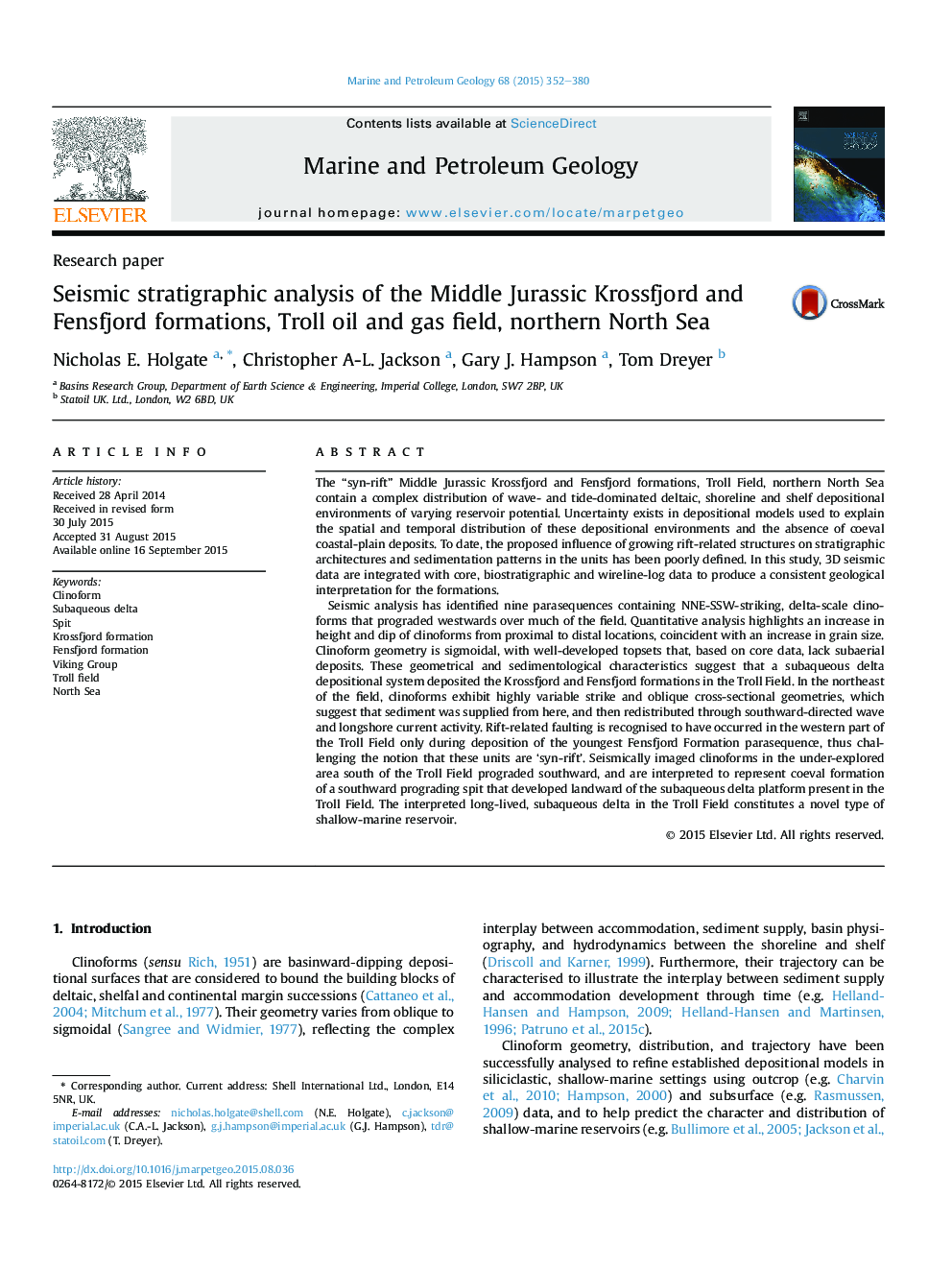| کد مقاله | کد نشریه | سال انتشار | مقاله انگلیسی | نسخه تمام متن |
|---|---|---|---|---|
| 6435100 | 1351611 | 2015 | 29 صفحه PDF | دانلود رایگان |
- We conducted 3D seismic analysis of shoreline-scale clinoforms in Troll Field.
- Clinoform geometrical analysis was combined with sedimentological data.
- Interpreted a long-lived, wave- and tide-influenced, subaqueous delta complex.
- Identified a coeval spit landward of the subaqueous “Troll Delta”.
- Subaqueous delta is considered a new and significant siliciclastic reservoir type.
The “syn-rift” Middle Jurassic Krossfjord and Fensfjord formations, Troll Field, northern North Sea contain a complex distribution of wave- and tide-dominated deltaic, shoreline and shelf depositional environments of varying reservoir potential. Uncertainty exists in depositional models used to explain the spatial and temporal distribution of these depositional environments and the absence of coeval coastal-plain deposits. To date, the proposed influence of growing rift-related structures on stratigraphic architectures and sedimentation patterns in the units has been poorly defined. In this study, 3D seismic data are integrated with core, biostratigraphic and wireline-log data to produce a consistent geological interpretation for the formations.Seismic analysis has identified nine parasequences containing NNE-SSW-striking, delta-scale clinoforms that prograded westwards over much of the field. Quantitative analysis highlights an increase in height and dip of clinoforms from proximal to distal locations, coincident with an increase in grain size. Clinoform geometry is sigmoidal, with well-developed topsets that, based on core data, lack subaerial deposits. These geometrical and sedimentological characteristics suggest that a subaqueous delta depositional system deposited the Krossfjord and Fensfjord formations in the Troll Field. In the northeast of the field, clinoforms exhibit highly variable strike and oblique cross-sectional geometries, which suggest that sediment was supplied from here, and then redistributed through southward-directed wave and longshore current activity. Rift-related faulting is recognised to have occurred in the western part of the Troll Field only during deposition of the youngest Fensfjord Formation parasequence, thus challenging the notion that these units are 'syn-rift'. Seismically imaged clinoforms in the under-explored area south of the Troll Field prograded southward, and are interpreted to represent coeval formation of a southward prograding spit that developed landward of the subaqueous delta platform present in the Troll Field. The interpreted long-lived, subaqueous delta in the Troll Field constitutes a novel type of shallow-marine reservoir.
Journal: Marine and Petroleum Geology - Volume 68, Part A, December 2015, Pages 352-380
